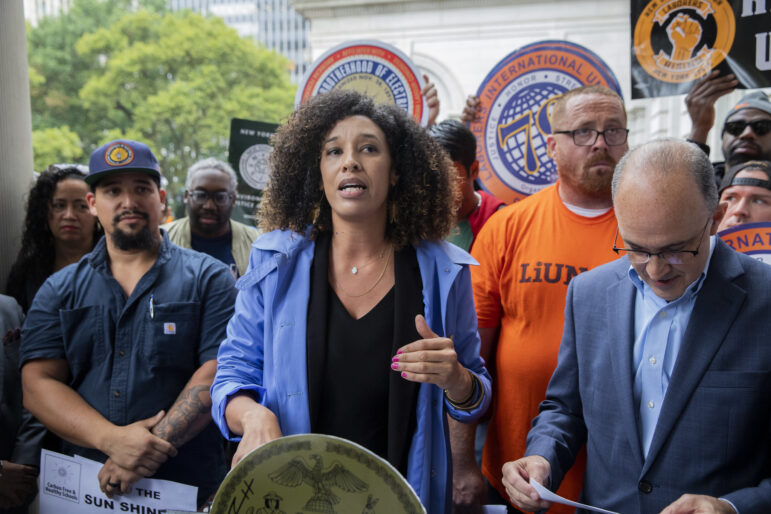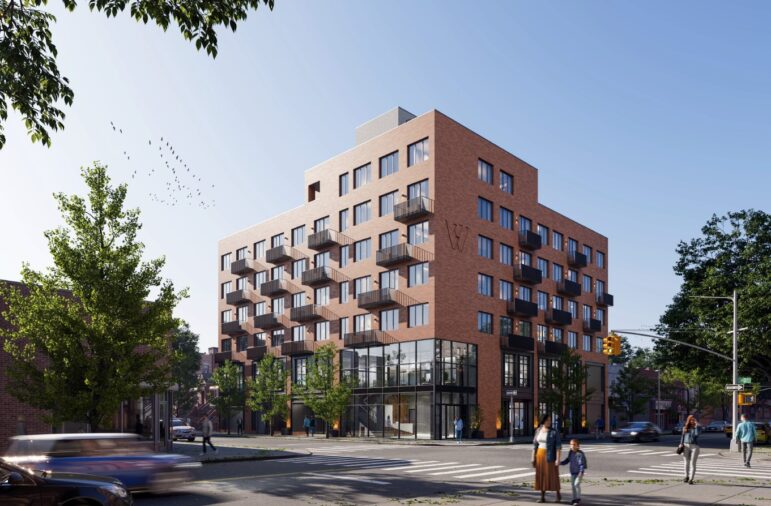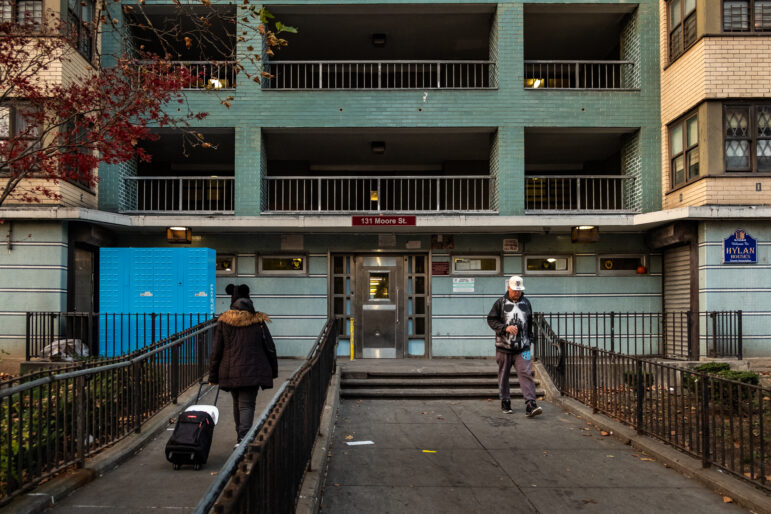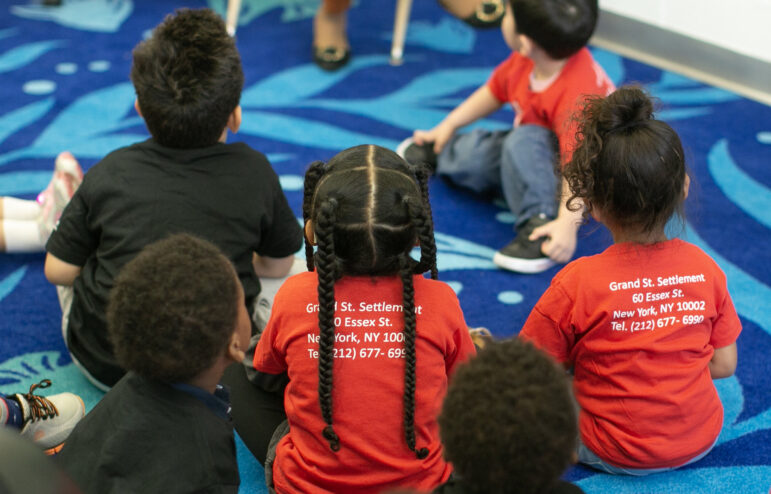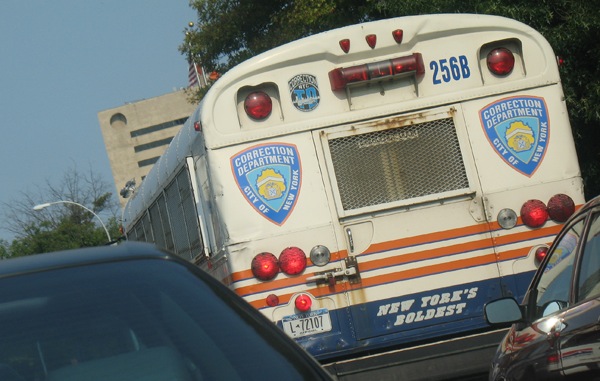
Photo by: Jarrett Murphy
Rikers Island jail has had a horrifying explosion of violence and group beatings in recent years: slashings, stabbings, broken bones, noses, eye sockets, jaws… even deaths. Inmates and correction officers alike have had fingers bitten off, been stabbed with pens and makeshift knives, and brutally beaten in gang attacks.
According to the Times, “Over the past decade, the use of force by correction officers has jumped nearly 240 percent, even as the daily population has declined by almost 15 percent…”
It’s no secret that American jails are the new mental hospitals for the poor. Deep cutbacks in mental institutions, community health care centers and other social services has led to more prisoners with mental health diagnoses. This includes up to 50 percent of the adolescent inmates at Rikers, described by NYTimes reporter Jim Dwyer as “the basket into which society drops the disruptive mentally ill.”
Combining habitual violent criminals, substance abusers, the mentally ill, and first-time offenders into a single adolescent housing unit has resulted in a perfect breeding ground for extreme violence and victimization of the most vulnerable. Rather than provide rehabilitation or treatment for new offenders, they become prey for – and students of – more experienced criminals. While punitive measures and solitary confinement may permit officers to control volatile adolescent inmates, these approaches exacerbate conditions of those with mental illness.
Reports indicate some officers have “deputized” inmates to control others with physical force (so officers are not shown abusing them on now-ubiquitous prison cameras), then falsified records to cover up what really happened. Events reported as fights between two inmates are, according to reports, often melées where a gang is directed (in some cases by inmate leaders, in others by staff members) to extort food or phone privileges from victims, or to “show them who’s boss.” Some officers allegedly even teach fight techniques to gang members that conceal the extent of beatings (i.e., wrestling holds and kicking the torso rather than the face), which they then use to their own ends.
This violence must be exponentially reduced now, not at some future, nonspecific date. Too many deaths, too much physical and psychological damage has already occurred, to both inmates and staff.
While many seek a “quick fix” for Rikers Island, the escalating and devastating violent behavior is a multi-faceted problem, requiring a multi-dimensional solution that addresses critical issues like:
The first and most important change is to reduce the staff-to-inmate ratio, and one of the key means to achieve this goal is by diverting all non-violent offenders to more appropriate settings and/or treatment programs.
Statistics have shown far fewer (and far less serious) incidents of violence in Department of Juvenile Justice facilities than in Department of Corrections. This may partly be attributed to enhanced staff training, but is mostly due to the required staff ratios of 1:8, and social worker ration of 1:15 – compared to Rikers where the staff to inmate ratio soars to 1:50. No wonder violence there has skyrocketed. Larger groups of juveniles are more difficult to manage, and it is harder for staff to work effectively with individuals in larger groups. It is also more difficult to move larger groups for various programmed activities such as programmed recreation, educational classes, therapy or medical treatment.
The quickest way to reduce the staff-to-inmate ratio in adolescent housing units is to lower the inmate population through effective diversion programs. These are based on accurate inmate classification, where juveniles who are first-time or non-violent offenders, or who have mental illness or substance abuse issues, are diverted to more appropriate settings where they can actually receive needed treatment and rehabilitation, thus reducing recidivism. Research shows that these groups are vulnerable to victimization at the hands of violent, experienced criminal gangs in prison.
Diversion to mental-health and drug treatment programs, with different levels of care and supervision based on criminal history and drug or mental health problem severity, will help to reduce total number of incarcerated adolescents, while maintaining safety and security in the community. Reducing their caseloads enables staff members to obtain and employ additional training to work with their young charges, which will further reduce violent incidents.
Everyone – front-line correction officers, supervisors, the correction officers’ union, commissioner of corrections, and even the mayor’s office – must move beyond self-interest and commit to work together toward implementing changes necessary to reduce the extreme violence on Rikers Island. And yes, these programs will cost money. Taxpayers currently pay over $72,000 per inmate per year at Rikers, nearly double the tuition at most private high schools or colleges. This investment should yield a better return than escalating violence, damage and lawsuits against the city.
Without this kind of far-reaching overhaul, nothing will change… the violence will just continue to get worse. Too many young people’s lives, and too many correction officers’ careers, have been damaged or destroyed by exposure to physical violence and emotional intimidation, and it must be stopped as soon as possible.
Despite critics and controversy, a solid consensus must be built among the diverse coalition of interested parties, and conditions addressed directly and dynamically to implement new integrated, holistic approaches needed to finally stem the terrible tide of violence fear, intimidation, bullying and abuse at Rikers Island.


